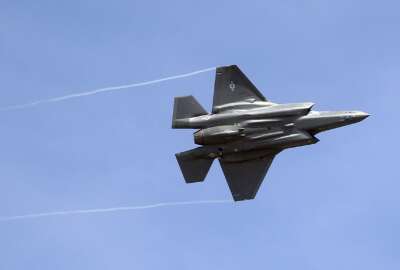
Air Force carpet bombs public affairs
Following a new set of policies concerning public affairs officers, the Air Force is cutting back on interviews and base visits for journalists.
The Air Force might be trying to hide in a hangar, but it’s catching flack anyway. Anyone in the Air Force that might interact with the press is undergoing re-education. Brass want people to think like the enemy, lest they divulge too much information. Reporters who cover the armed services are, well, up in arms.
The Air Force says internally it’s adapting to the re-emergence of great power competition. It’s not their idea, they point out. The latest National Defense Strategy expresses this idea. In this 21st century cold war, they worry what they say publicly could give the enemy an advantage.
That’s a legitimate concern. But I’m skeptical. I think they also want to have less bother with reporters.
In that regard, the Air Force has a lot of company. Agencies including the IRS, Veterans Affairs and parts of Homeland Security simply don’t give interviews. Even when requests align with their propaganda purposes, then don’t. Or they mistakenly believe it’s only worth their while to deal with what they perceive as important media.
This phenomenon has not taken hold across the board. Lots of agency managers and their public affairs offices remain highly accommodating. I deal with many, many PAOs who are a pleasure to work with.
The Air Force policy, as revealed by Defense News, is basically a bar-the-doors strategy. “Media embeds, media base visits, and interviews are suspended until further notice.”
Requests for information must run way up the flagpole for approval. The Air Force provided its public affairs people a list of 10 topics, discussion of which they deem operational security risks. The list includes classified information, fair enough. The rest of the list are items that, in my experience, military people don’t normally talk about anyway. Here’s the list verbatim:
- Classified information
- Information on unit’s critical information list
- Information related to current operations, readiness or posture for future operations
- Vulnerabilities that could impact the readiness or operations involving other countries
- Details of number, location, and capabilities of operational assets
- Detailed descriptions of a sequence of events in an operational or training scenario, or exercise to include major exercises such as operational readiness inspections or Flag/major training exercises
- Detailed descriptions that reveal capability of unique command and control node (Space Operations Centers, Air Operations Centers, etc.)
- Information that reveals tactics, techniques, and procedures
- Deployment schedules or locations
- Access to classified or sensitive areas
You can see how elastically the list could stretch to cover pretty much anything.
But are Air Force officials too cautious? Many easily-available sources of information on numbers of assets and where they’re located already exist. Bases with, say, B-52s parked there tend to proudly display that fact on their websites. And I’m guessing China and Russia know where they are too.
Public affairs is instructed to use normal procedures for letting the public know when there’s a plane crash or an active shooter. PAOs also received a list of safe topics, such as human interest stories and historical events.
The new policy includes a statement expressing the Air Force’s commitment to “maintaining the hard-earned trust and transparency with the press and public.” It reads like the bureaucratic equivalent of Mary Poppins’ spoonful of sugar.
The Air Force calls this a “training end reset” effort. It feels more like a yank on a zip tie.
Copyright © 2025 Federal News Network. All rights reserved. This website is not intended for users located within the European Economic Area.
Tom Temin is host of the Federal Drive and has been providing insight on federal technology and management issues for more than 30 years.
Follow @tteminWFED






